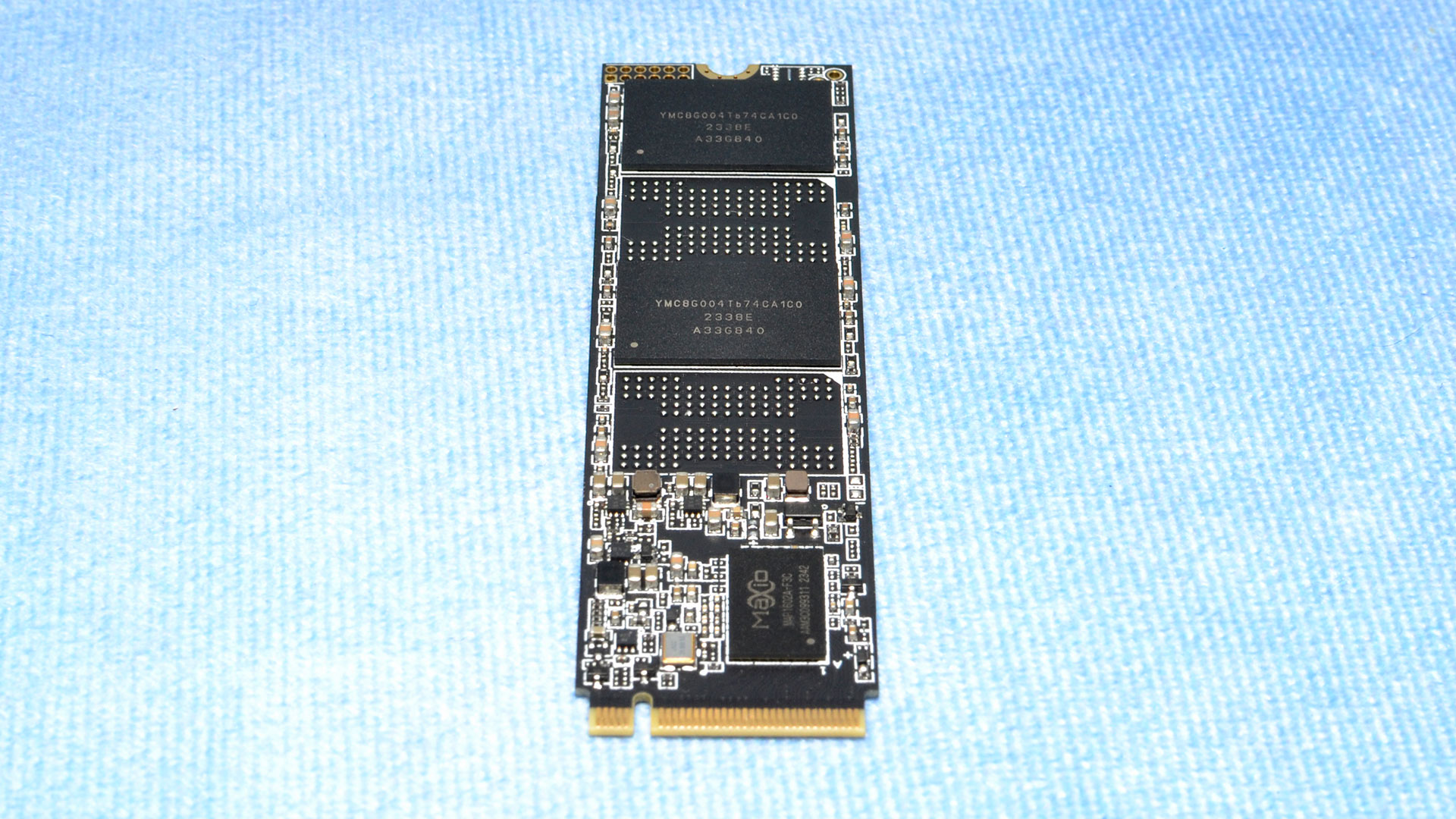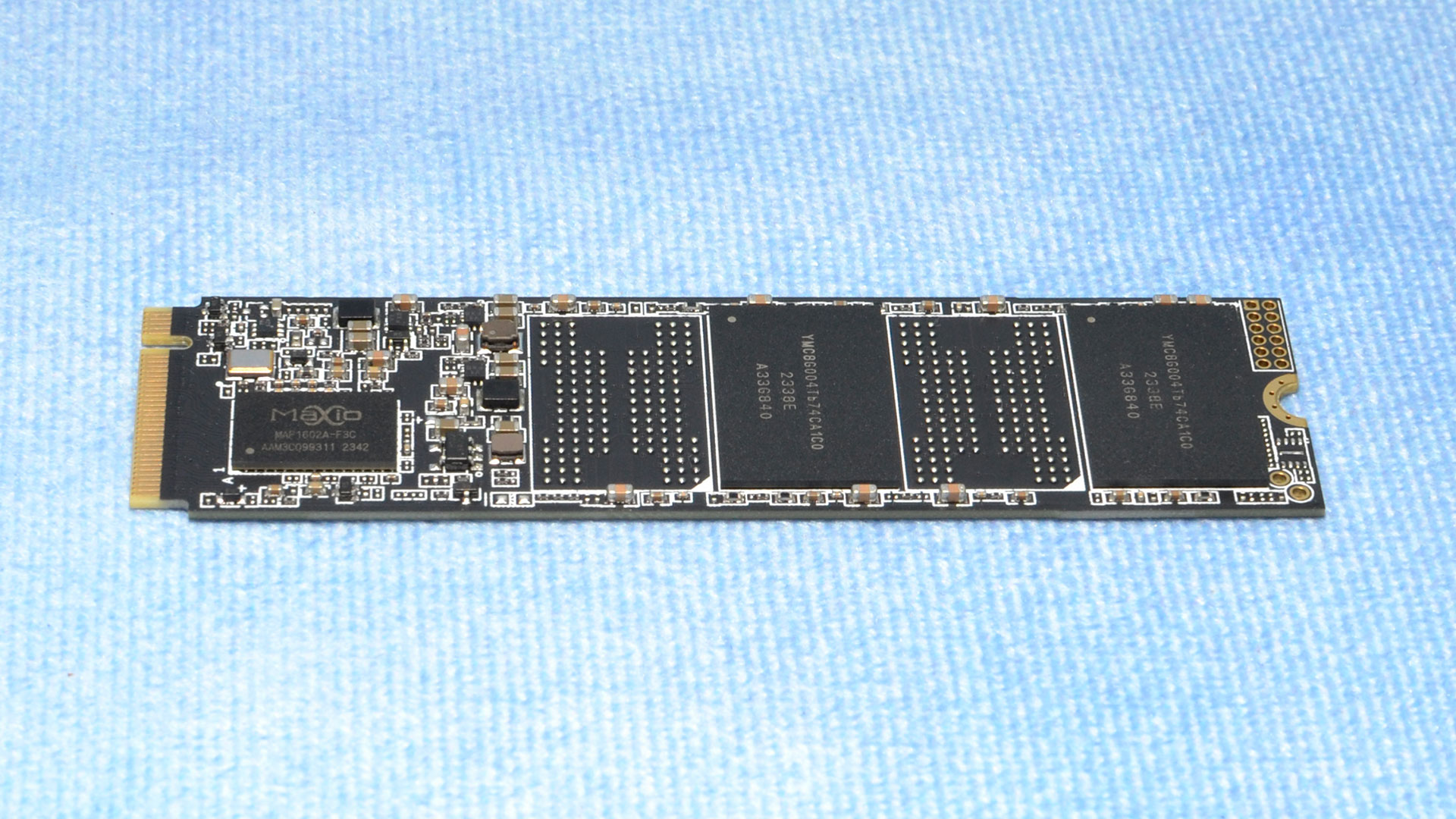Tom’s Hardware Verdict
The Netac NV7000-Q SSD is a QLC-based SSD with surprisingly good performance for the most part and excellent efficiency. But it’s currently a niche product that’s only available in 1TB capacity.
Performance is mostly good
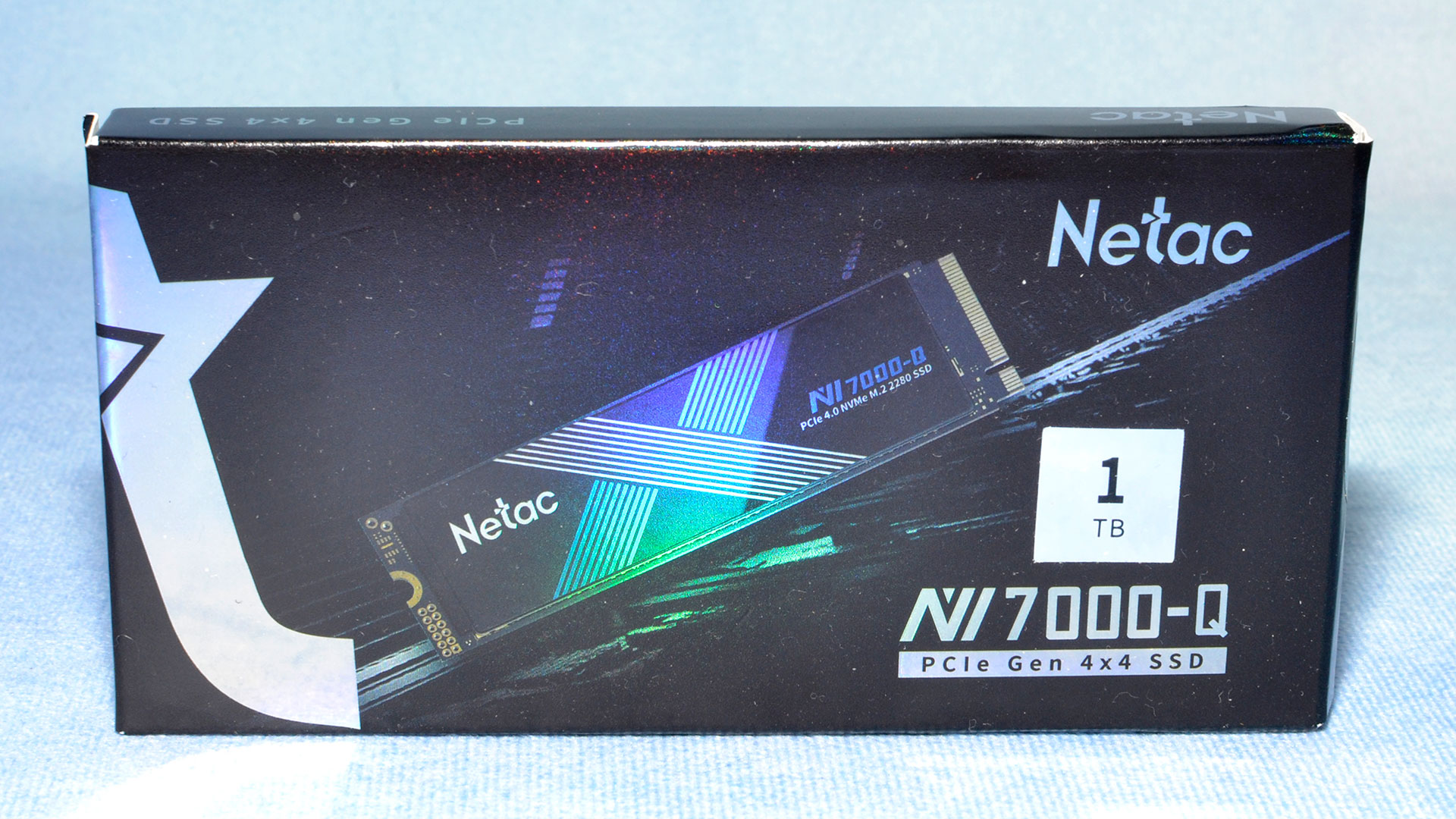
Extremely power-efficient
Only 1TB, at least for now
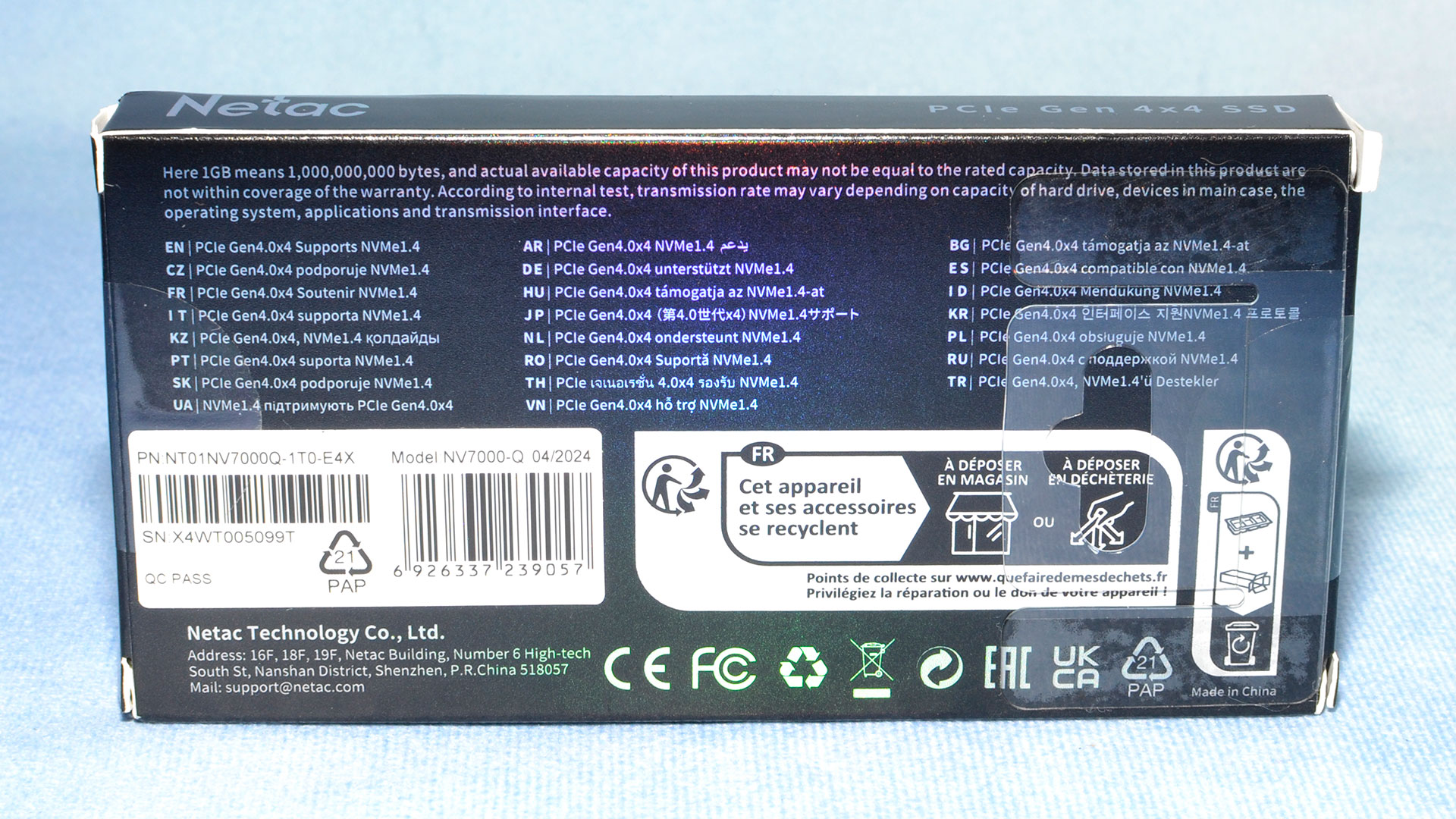
The usual QLC flash drawbacks
Why you can trust Tom’s HardwareOur expert reviewers spend hours testing and comparing products and services so you can choose the best for you.Find out more about how we test.

Netac NV7000-Q Intro, Features, and Specs
The Netac NV7000-Q SSD arrives as a product where you have to wonder about the target market. It’s a no-frills SSD that stands out mostly by way of its lack of personality. It won’t stand up to thebest SSDs, but it’s a surprisingly capable and efficient drive and certainly fills a niche. It just takes a little digging to reveal its good points.The NV7000-Q uses a DRAM-less controller paired with QLC flash, with a 1TB capacity — and that’s it. To be fair, having a drive that’s not constantly swapping hardware at different capacities is sort of a win, but it’s not an exciting SSD by any stretch. The most interesting bit is the QLC flash, one of the newer varieties, and the Maxio controller remains quite capable. On top of that, the NV7000-Q is extremely power-efficient and should be inexpensive — if and when you can find it. The drive holds up pretty well as a budget SSD, all things considered.In a lot of ways the drive reminds us of theSolidigm P41 Plus, an SSD designed for client machines to appeal to prebuilt desktop and laptop manufacturers as an inexpensive way to put “1TB PCIE/NVME SSD” on the label. This isn’t your parent’s cheap SSD, though, as it offers the performance of higher-end drives for most of what matters to a daily driver. Even if you can’t find it, there’s bound to be more drives like this with the same hardware — theHP FX700comes to mind — that fit into the same slot.
Netac NV7000-Q Specifications
The Netac NV7000-Q is only available at 1TB, at least at the time of review. That’s pretty unusual for a full-length drive and especially one based on QLC flash, as QLC often makes more sense for larger capacities. For example, thePatriot Viper VP4300 Lite 4TBhas the same NAND and controller. The NV7000-Q is clearly intended as an ultra-budget option, although we were unable to find solid pricing for it.We put an estimate of around $69.99 as the base price, which would be competitive with theCrucial P3 Plus— a drive the NV7000-Q should easily beat — though ultimately even that may not be inexpensive enough. The older TLC-basedNetac NV7000 costs $82.99, while the more recentNetac NV7000-T 1TB costs $92.99. More critically, drives like theSilicon Power US75have the same controller paired with TLC NAND, with a wider range of capacities, starting at$69.99 for the 1TB model.Netac rates the NV7000-Q for up to 7,100 / 6,200 MB/s reads and writes, and while IOPS are not given, we can estimate up to 1000K / 8000K random read and write IOPS based on data from ourHP FX700 review. The drive is warrantied for five years and up to 640TB of writes.
Netac NV7000-Q Software and Accessories
Netac offers no direct downloads. We recommend freeware applications if needed, including CrystalDiskInfo for general drive information, CrystalDiskMark for quickbenchmarking, and Clonezilla for backup, imaging, and cloning. Firmware updates could be a concern, should those ever be necessary.
Netac NV7000-Q: A Closer Look
The drive’s unremarkable appearance consists of the standard heat spreading label. Naturally, as a 1TB QLC drive, it’s single-sided — you may easily find single-sided 4TB QLC and TLC SSDs these days. Of course a budget SSD doesn’t need to be fancy, especially given such drives are usually hidden under a heatsink or laptop cover. Price and performance will be the more important aspects.
Now we get to see the actual hardware. The controller in play is the Maxio MAP1602, a DRAM-less design that can use the full PCIe 4.0 bandwidth. In previous reviews, we’ve found this controller to be fast and efficient. This is true with both TLC and QLC flash.Speaking of QLC, the two 512GB NAND flash packages here are using YMTC’s 232-Layer QLC flash, alternatively known as X3-6070. This flash has some similarities to Micron’s 232-Layer QLC flash, as tested on theCrucial P310, such as being four-plane. Each plane has its own hardware for individual operation so this count indicates internal interleaving per die, which does impact total throughput. This four-plane layout is different from the six- or hexa-plane designs of Micron’s and YMTC’s 232-layer TLC flash.More planes means more potential throughput, but a more agile four-plane design can make sense if you’re trying to eke out better latency from QLC flash. After all, this flash is at 1Tb per die just like the TLC variant, so it has higher bit density but without a lot of cost, meaning that endurance can also be surprisingly high for QLC flash.
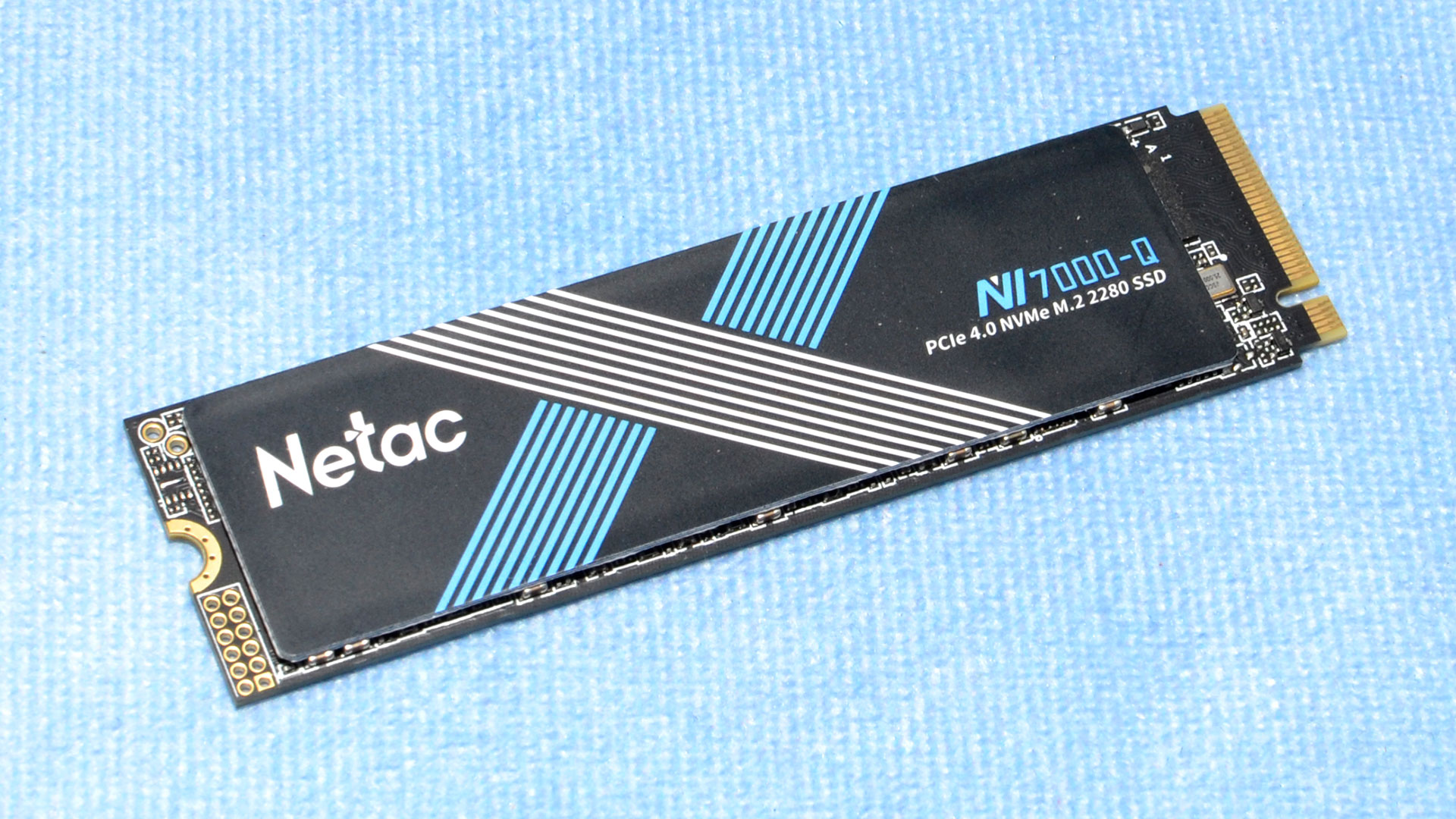
MORE:How We Test HDDs And SSDs
MORE:All SSD Content
Current page:Netac NV7000-Q Intro, Features, and Specs
Shane Downing is a Freelance Reviewer for Tom’s Hardware US, covering consumer storage hardware.
